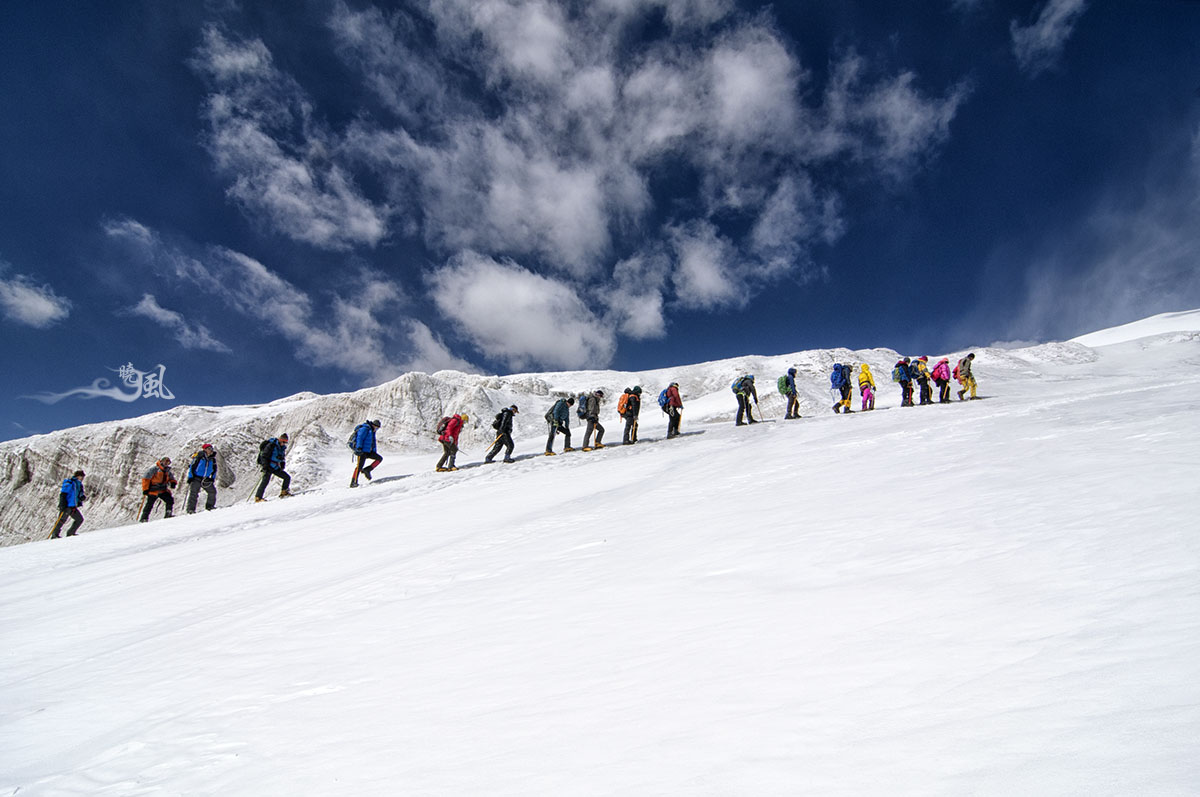Watch this to teach you how to choose ice claws!
Winter is approaching, many outdoor and extreme hobby sportsmen will begin to climb the mountain journey, the face of smooth snow and ice ground and complex and challenging terrain, choose a suitable for their own ice claws is a very important thing, and even related to personal safety. Let's look at how to choose ice claws today.
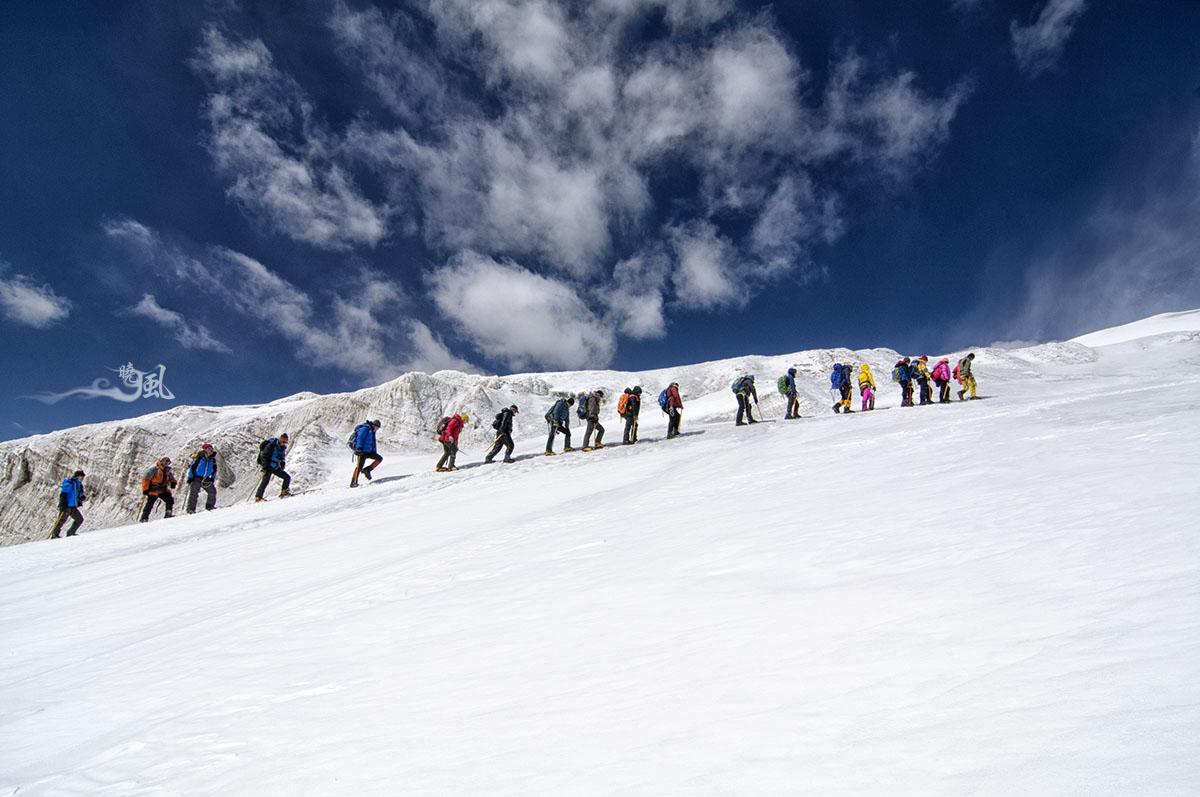
Let's start by understanding how ice claws work:
Ice claws are made of metal and have sharp teeth, when walking or climbing with their own weight to use the sharp teeth into the snow or ice to increase the grip, to play a role in fixing their own and prevent slipping.
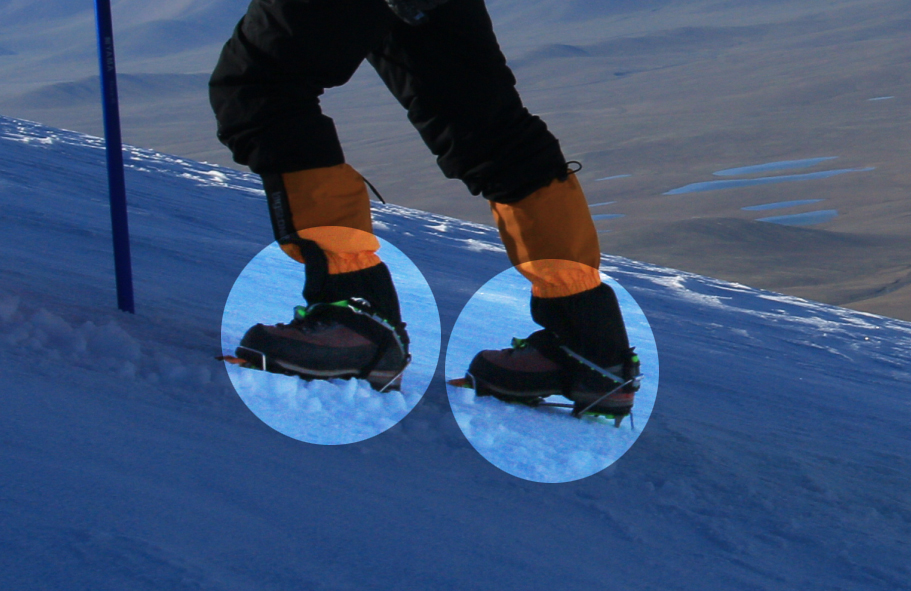
The average ice claw consists of 10 parts:
1. front teeth 2. heel 3. sizing bar 4. quick size adjustment tabs 5. binding straps 6. safety carabiner 7. snow blocker 8. carabiner bar 9. heel retainer 10. front binding section
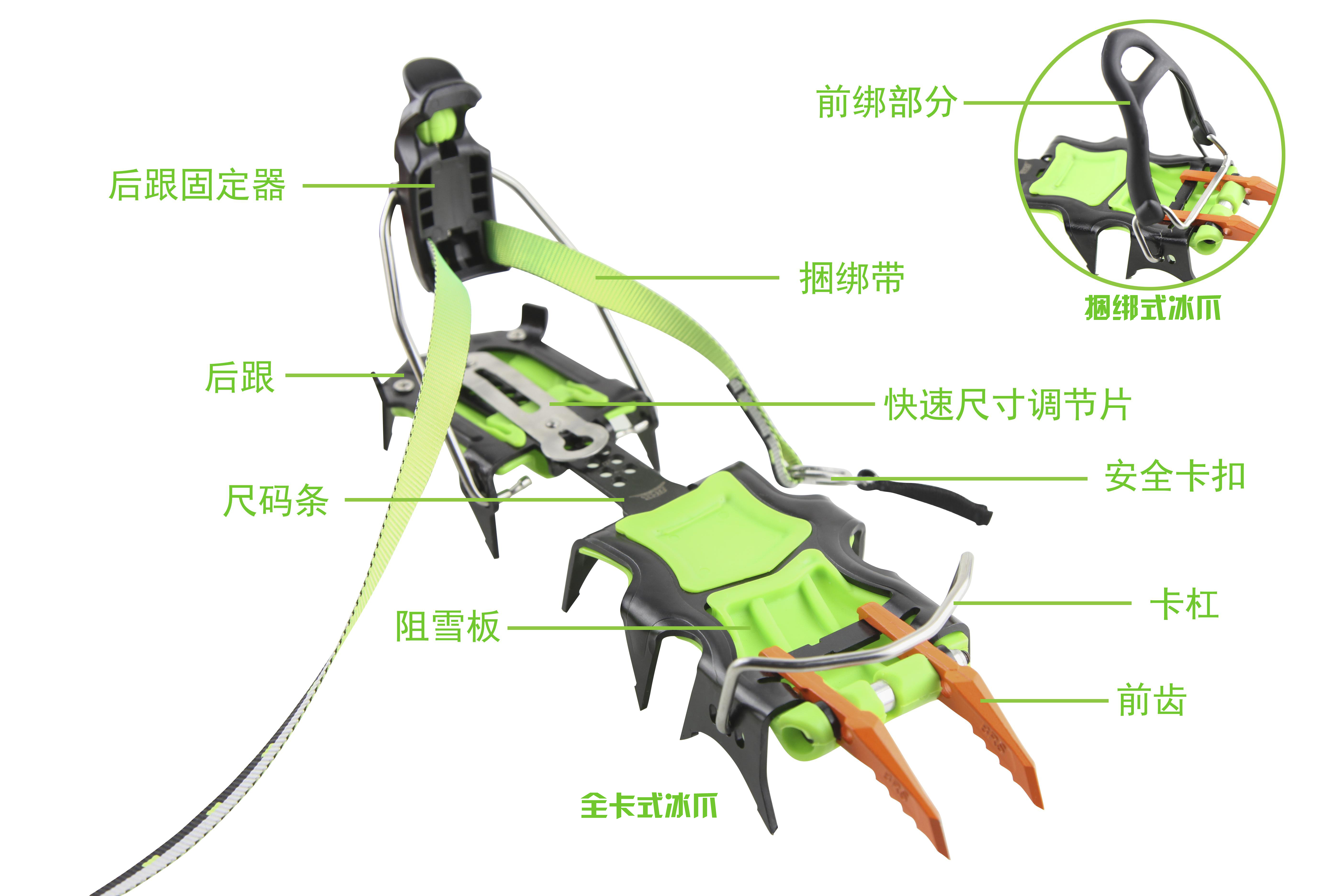
Ice claws can be categorized into three types based on their use:
1. Simple ice claw: ordinary icy, snowy road surface use. Such ice claws are inexpensive, simple structure, but firmness, stability is slightly worse.
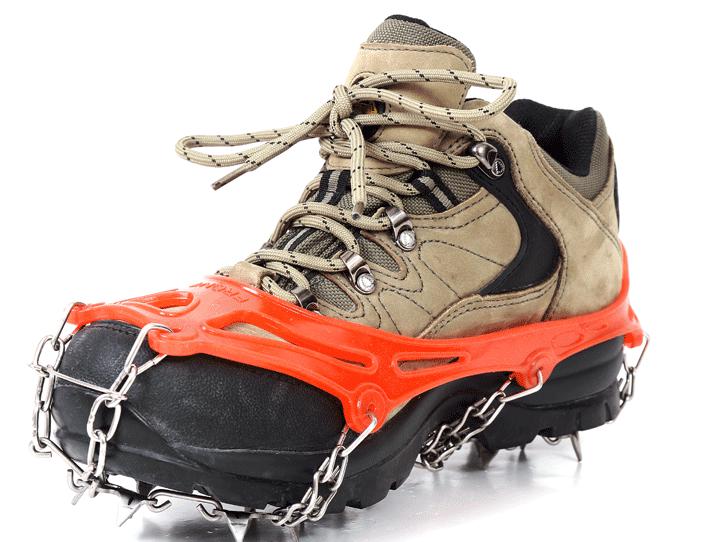
2.Walking ice claws: field hiking, crossing, mountaineering. Such ice claws cost-effective, durable material, but can not be used for ice climbing and other dangerous lines.
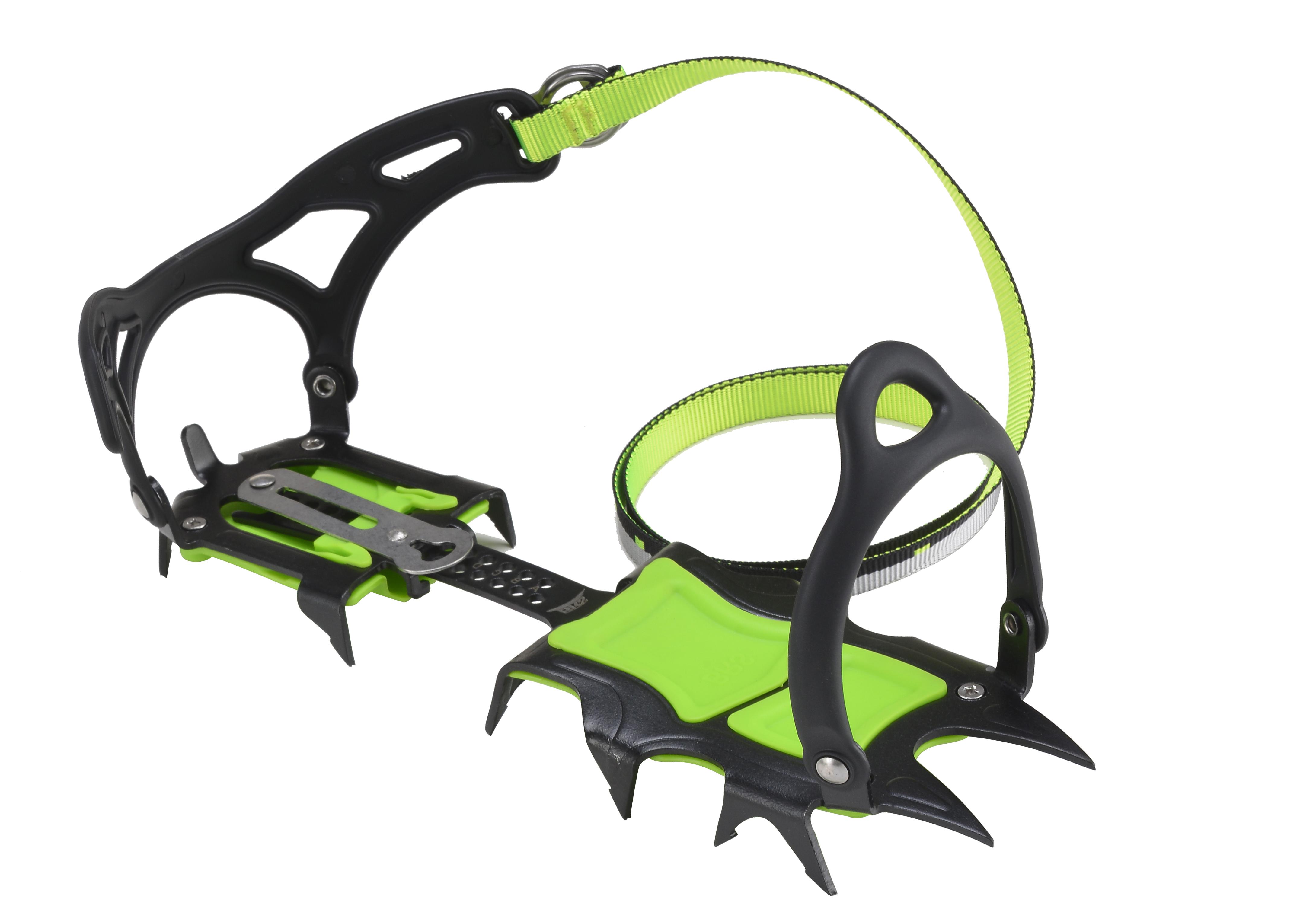
3. Professional Climbing Ice Claws: used for high altitude expeditions and ice climbing. This kind of claw price is higher, the matching shoes and boots also have high requirements. The user's experience also has certain requirements, according to the use of the environment is not the same is also divided into the full card type, full binding type, the front binding after the card type three.
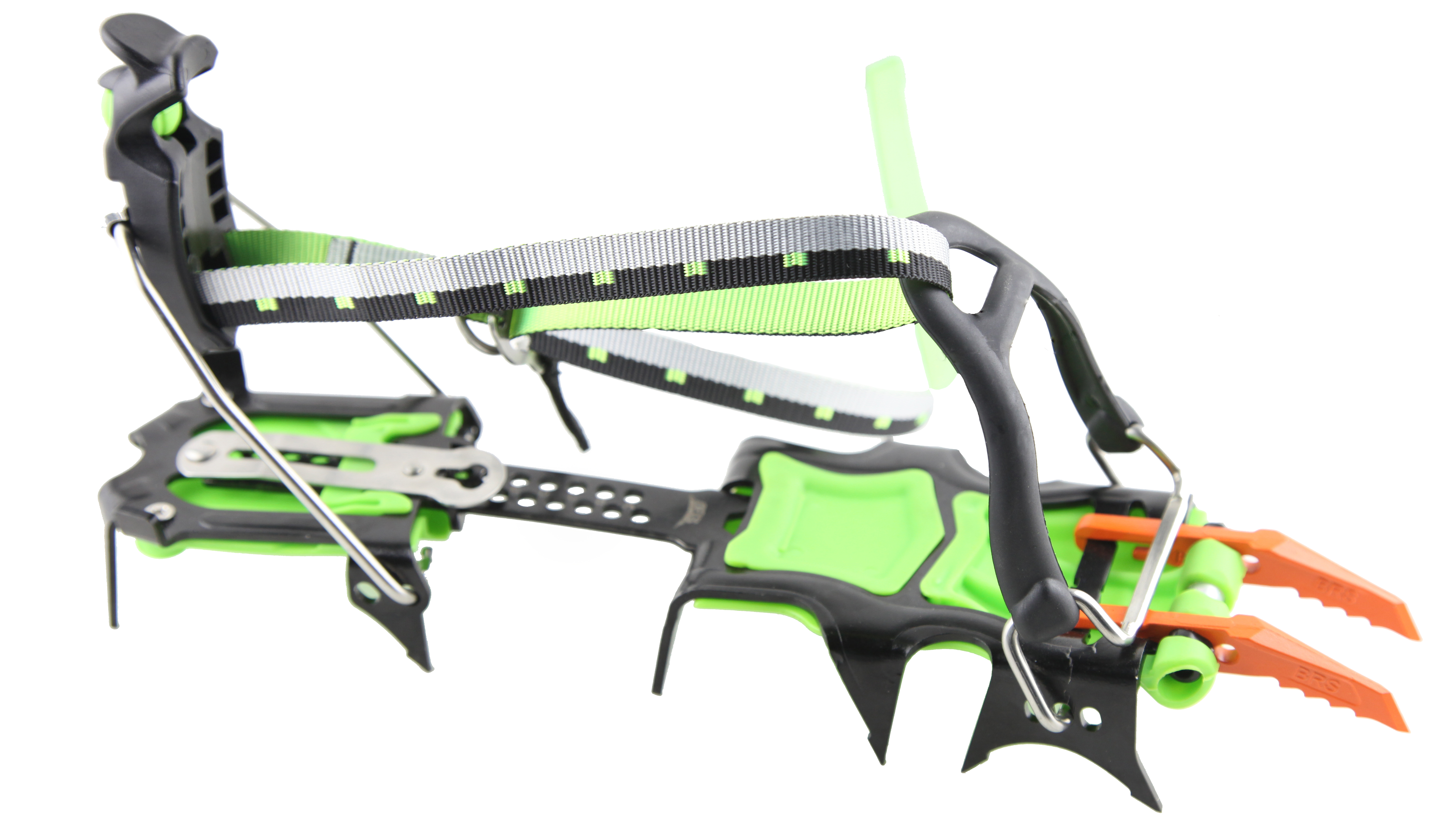
1.Full-clip ice claws: first of all, the shoes must have ice claw slots, usually only on alpine boots and some heavy hiking shoes have this function. The advantage of full-clip ice claws is that it is very stable after fixing, not easy to loosen, and it is relatively free and convenient to put on and take off. However, the disadvantage is that if the shoes are made with ice claw grooves, the soles need special reinforcement treatment. The sole of the shoe naturally becomes hard, and the weight of the shoe goes up, and the difficulty of the production process also increases a lot, resulting in the overall price of the shoe will not be too low.
2.FULL BINDING PADDLES: Full binding paddles utilize several webbing straps to bind the paddles to the shoe. Its biggest advantage is that it can be used with any hiking shoes without any limitation. However, the disadvantage is that first of all, the degree of fixed firmness is not as good as the full-clip ice claws, and the second is that when walking for a day after the webbing is easy to freeze, it will become very difficult to take off.
3.Front binding rear card type ice claw: this kind of ice claw is the most convenient to use the ice claw, but requires the shoes to have a rear card slot.

If you want to identify the good and bad ice claws then go to the teeth, mainly in these three areas
The first is the metal material chosen for the teeth. Ice claws with metal should choose the texture hard toughness high 65 manganese steel production. If the texture is not hard enough, then soon the tip of the ice claw will become rounded and lose the ability to stab the ice, but some steel is hard but very brittle, this ice claw is easy to accidentally kicked to the stone when suddenly broken.
Secondly, we should pay attention to the number of teeth. Usually the number of teeth of the ice claw from 4 teeth to 14 teeth, the more teeth of the ice claw can better cope with the complexity of the road. Usually not recommended to buy 10 teeth below the claw, this type of claw usually steel choice is not very good, and 10 teeth below the claw in the use of the process of fixation and climbing ability on the performance is not good. It is recommended to choose more than 10 teeth of ice claws is best.
The third point is for ice claws with 10 teeth or more that have front teeth, which are divided into two categories: vertical and flat teeth, which are designed for climbing vertical or near-vertical ice walls. Flat teeth are designed for walking on flat ground. Occasionally they can also be used for climbing. (Flat teeth means that the front teeth of the climbing claw are flat, due to the fast production of the one-piece press-out. Vertical teeth means that the front two teeth are made of hard forged straight teeth to facilitate kicking into hard snow and ice.)
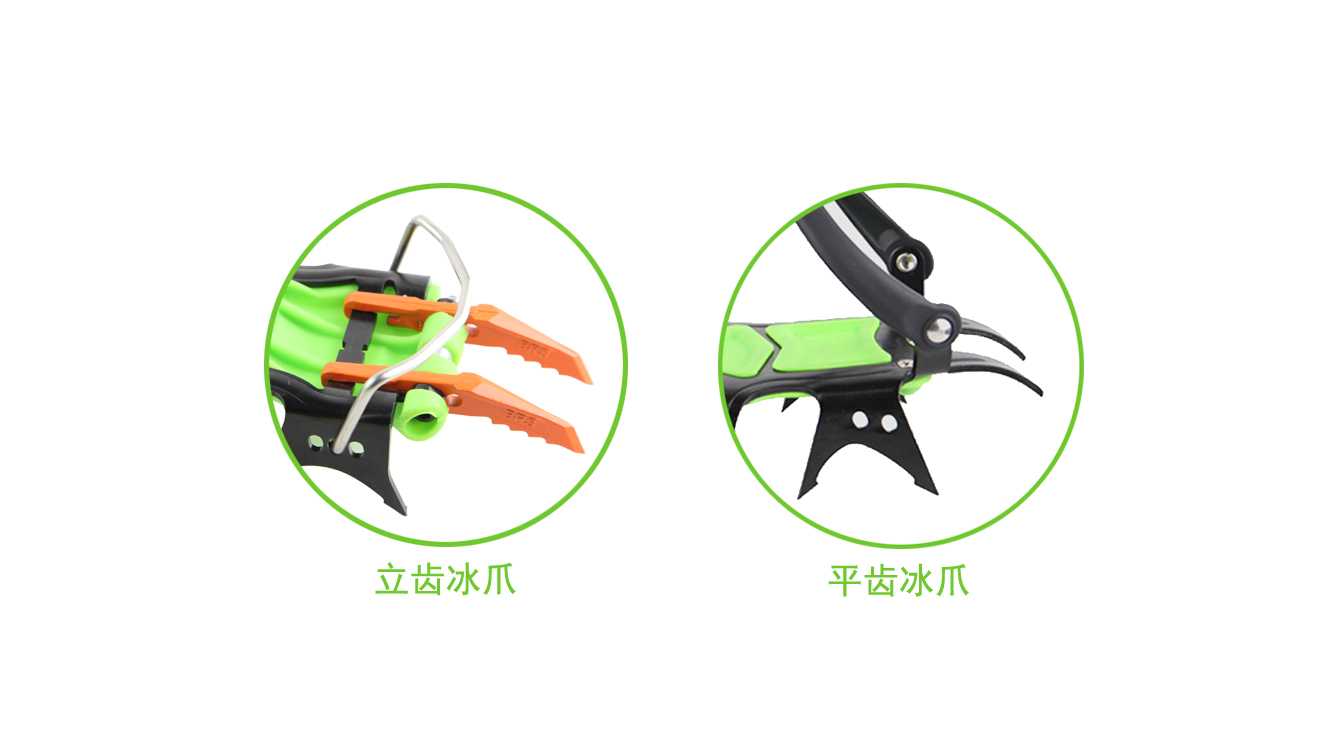
To summarize, if you are going to buy ice claws, you can refer to the following suggestions:
1、Winter general ice and snow road walking or general ice and snow climbing: choose 10-14 teeth of flat teeth bundled walking ice claws.
2、Ice Climbing: choose 14 teeth standing teeth full card ice claws.
3, general snow mountain climbing: choose 14 teeth flat teeth full card ice claws or front binding rear card type ice claws.
4、Technical snow mountain climbing: choose 14 teeth standing teeth full card ice claws.
Remember! If if hiking with ice walking ice claws, this is making a joke of life.
Finally, I'll tell you a few notes about the use of ice claws:
⒈ Ice claws adjusted to fit the size of the boots: the most suitable length is slightly shorter than the boots 3 ~ 5mm, not too short or more than the length of the boots, more than the length of the boots in the withdrawal, will be uncomfortable and cause danger.
When climbing upwards, always check the condition of the crampons, adjust the screws or straps for slack and the carabiners for shifting.
3. After installing the ice claws, take a few steps to test them before tying them down.
4. In some snow conditions (especially wet and soft snowfields in the late afternoon), any crampons will be jammed with snow, so it is recommended to choose crampons with snow stoppers.
5. Grinding ice claw with a thwart knife to slowly grind by hand, never use a grinder to grind, ice claw steel hardness will be changed due to high temperatures
6. Never heat the ice claw on fire, the strength and durability of the ice claw will be damaged.
7. Don't leave dirty and wet paws in the waterproof bag, keep clean and dry is the principle of ice paw maintenance.
8. Be aware that ice claws can hurt people and should be stored and used properly.
9. Using crampons on rocky or concrete terrain can cause damage to your crampons, so remember to check the condition of your crampons at all times, especially before climbing a route!


